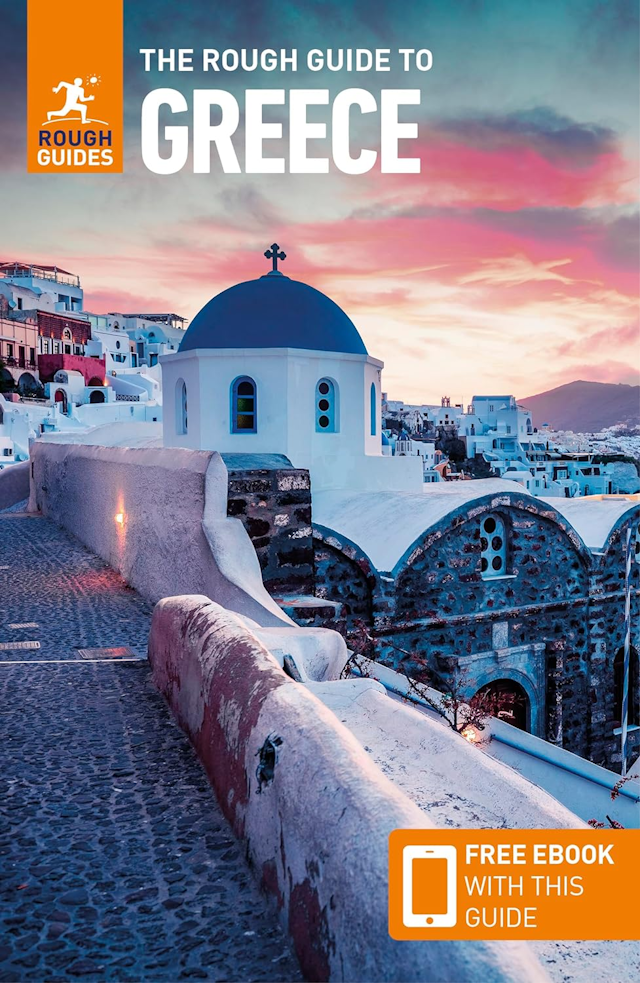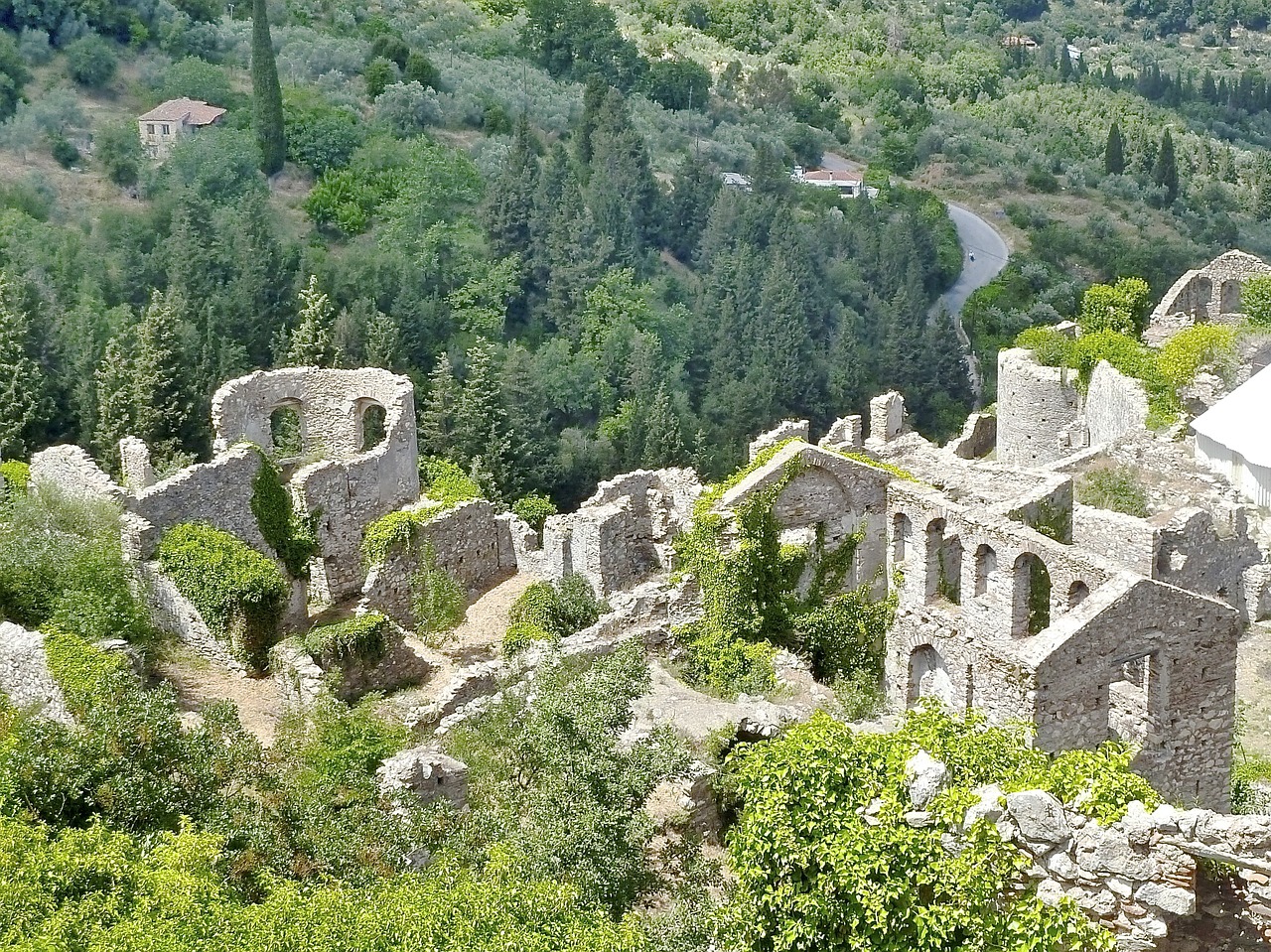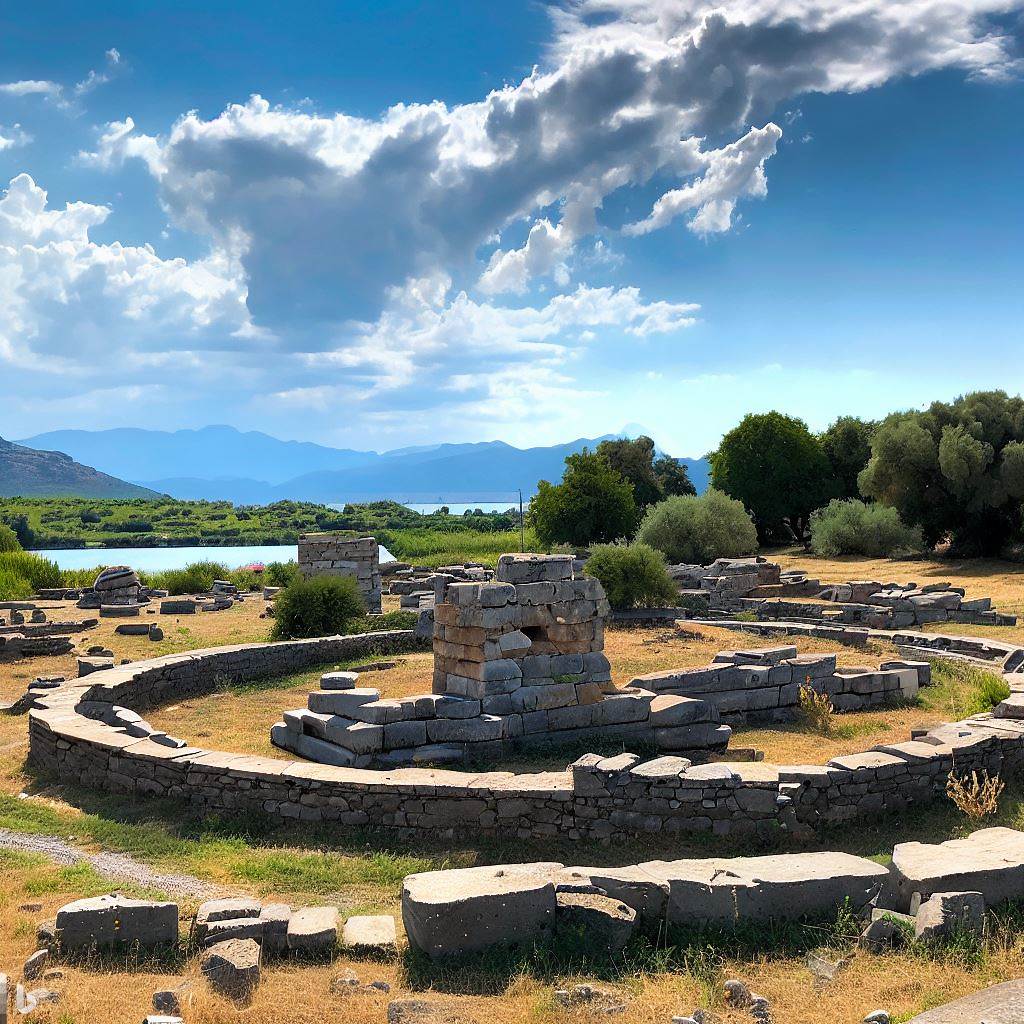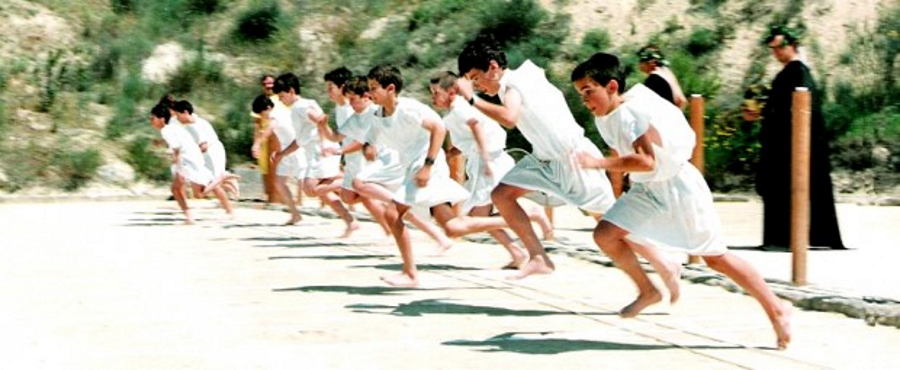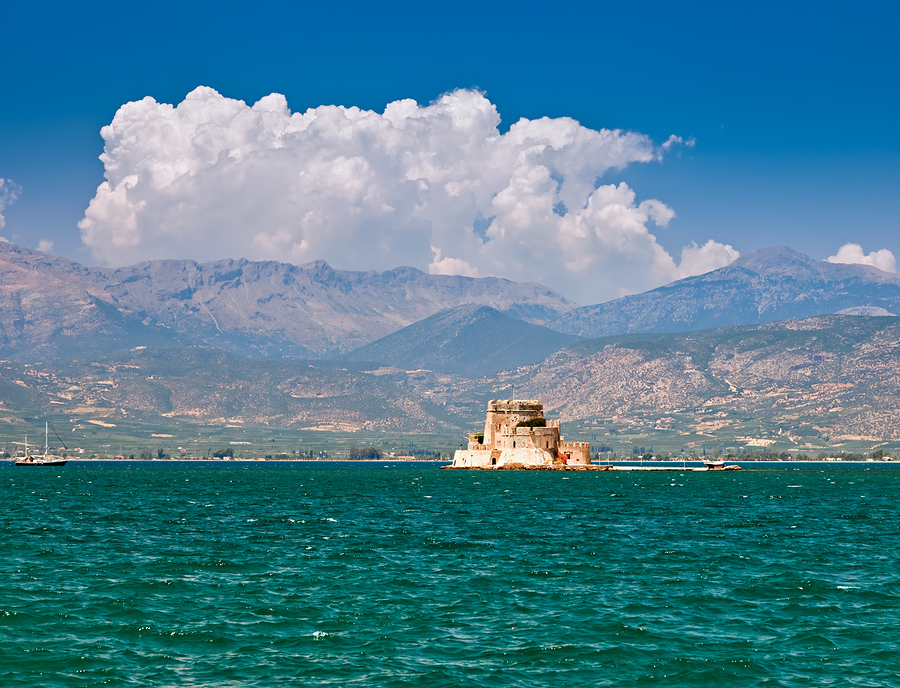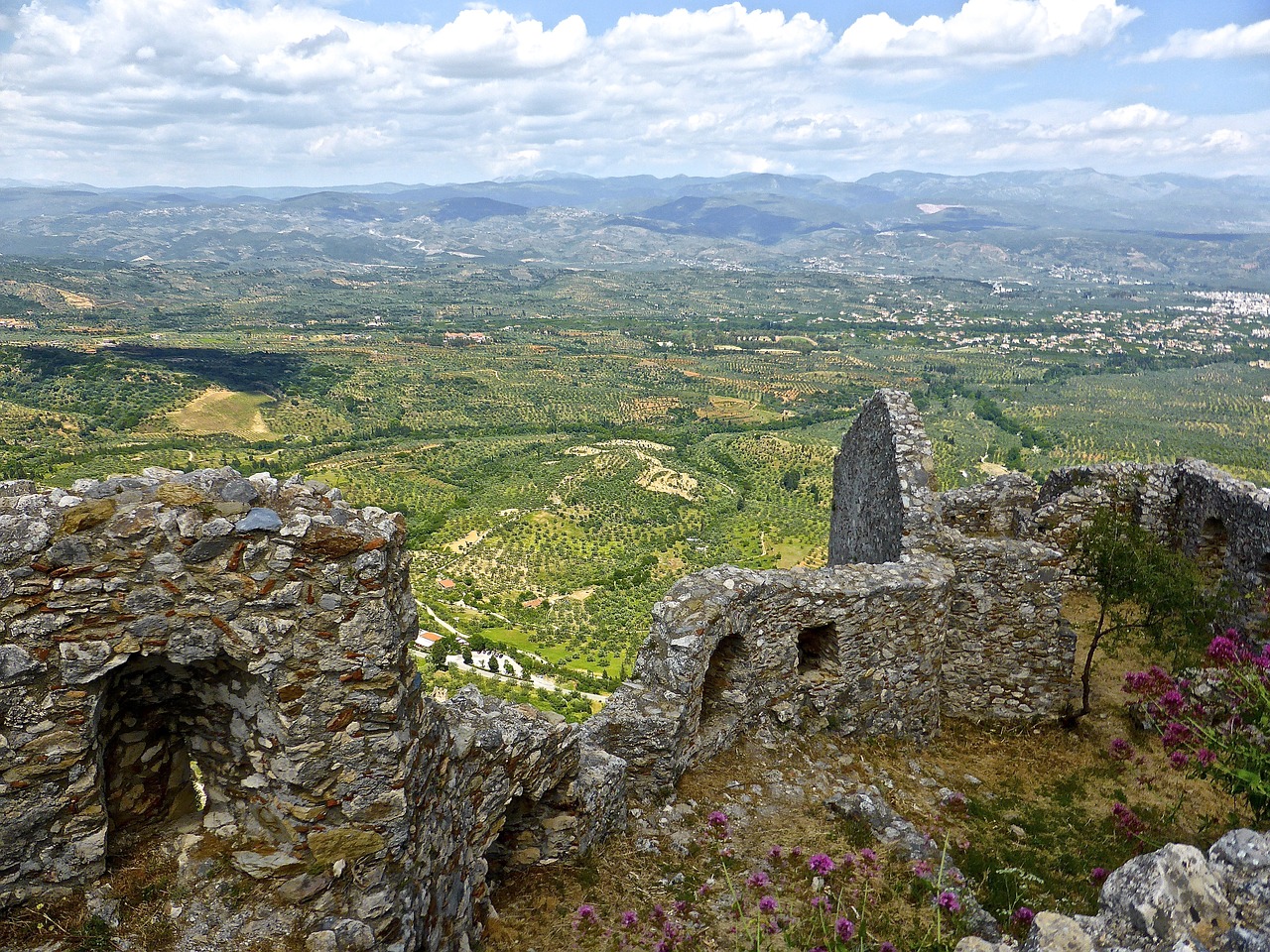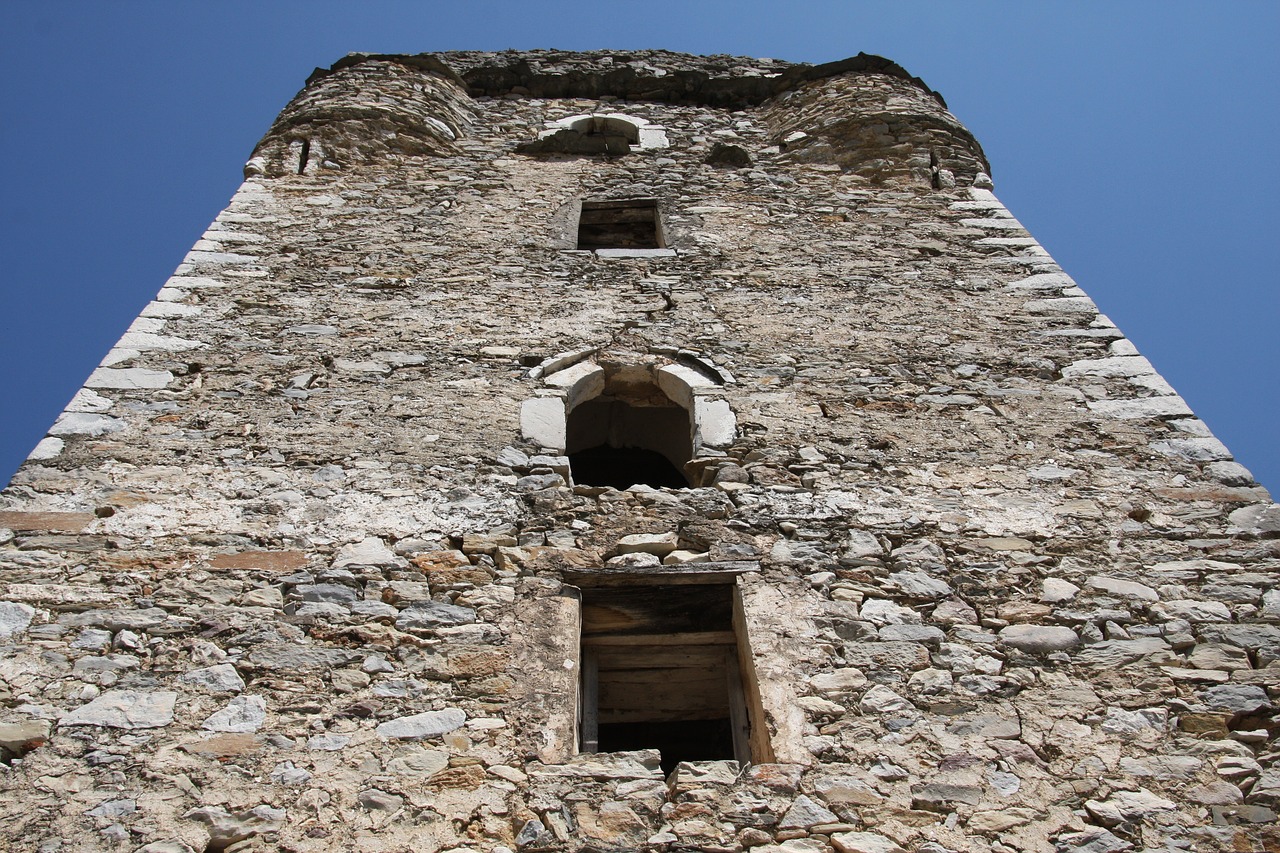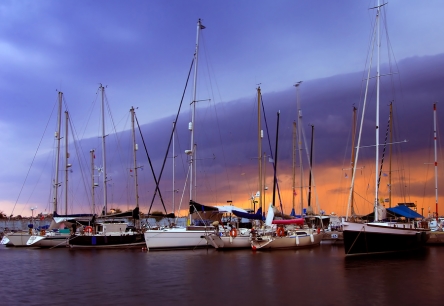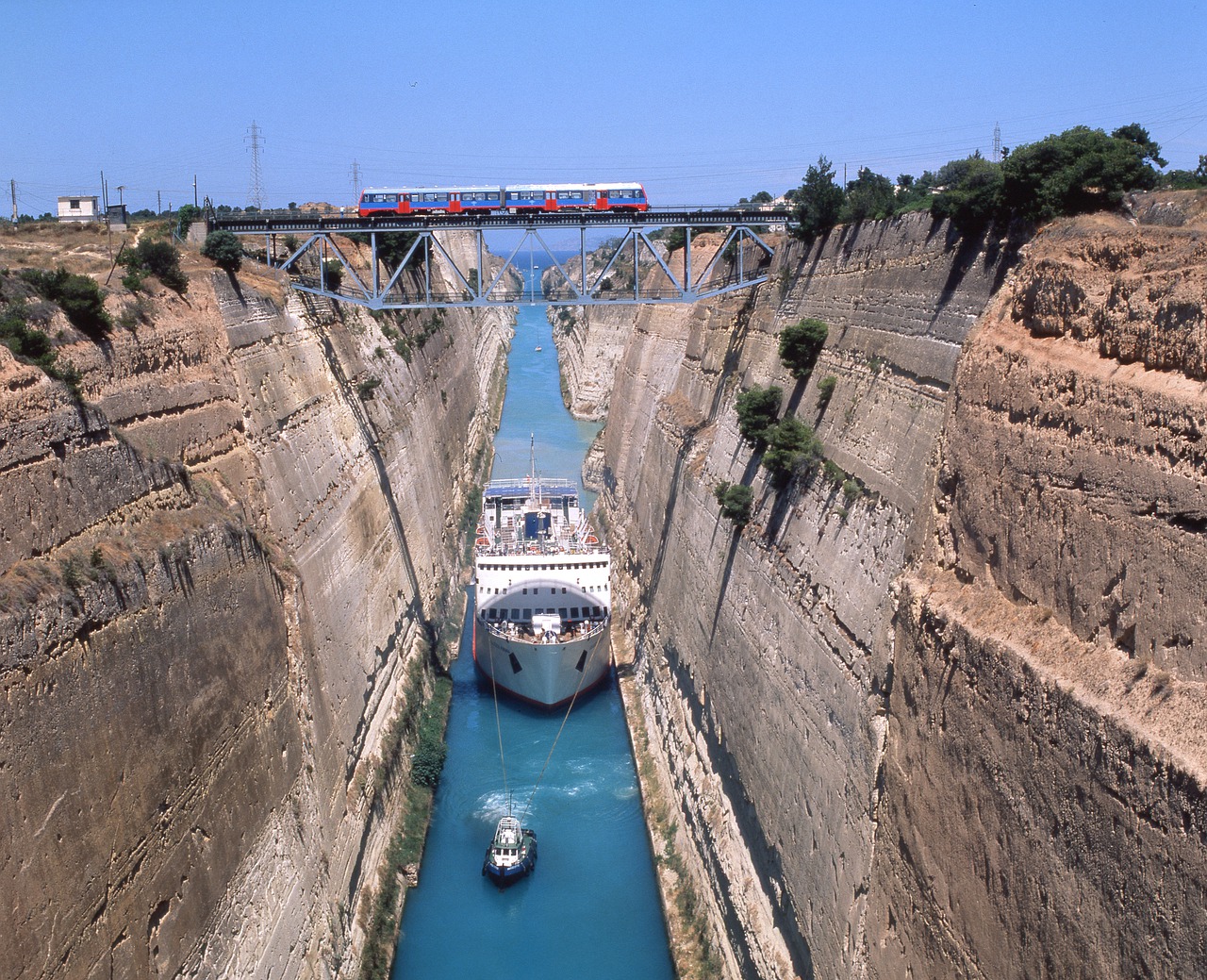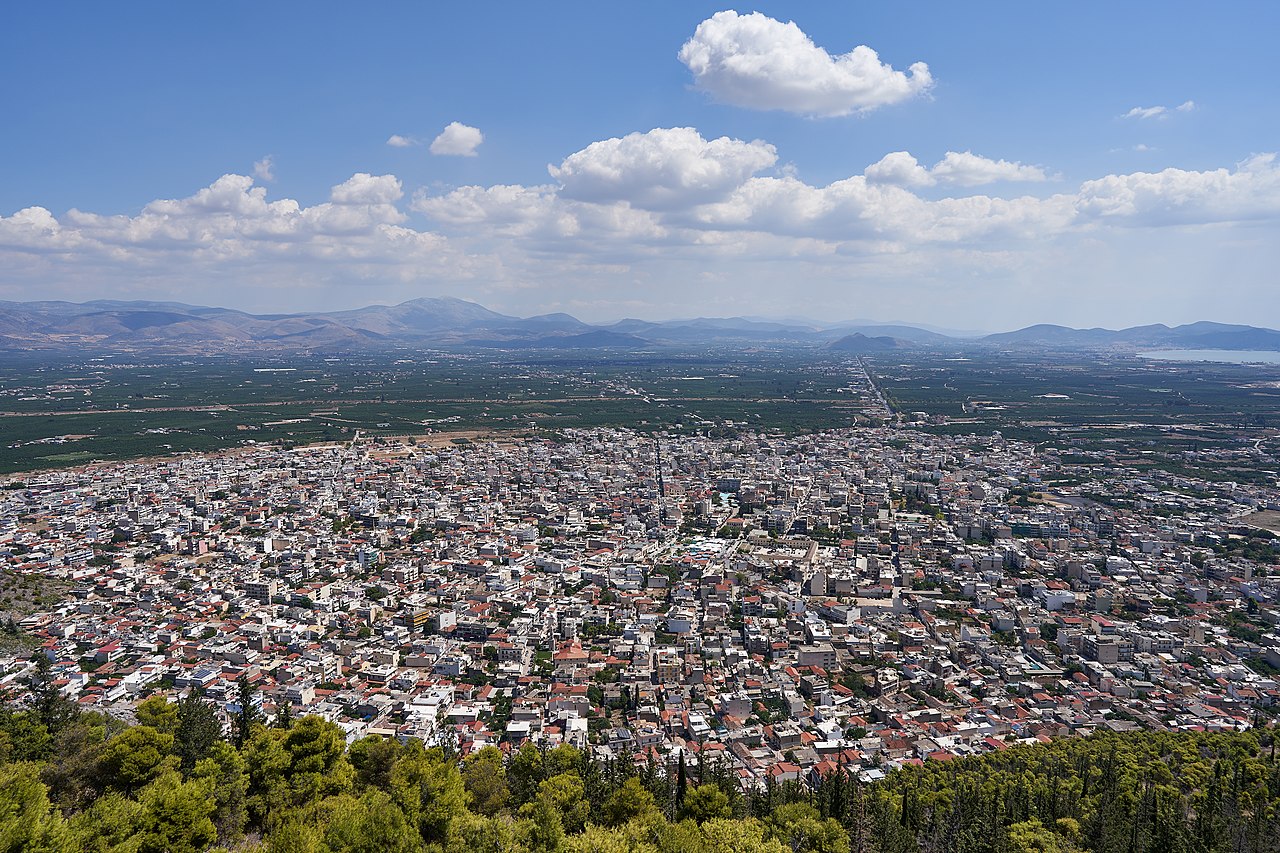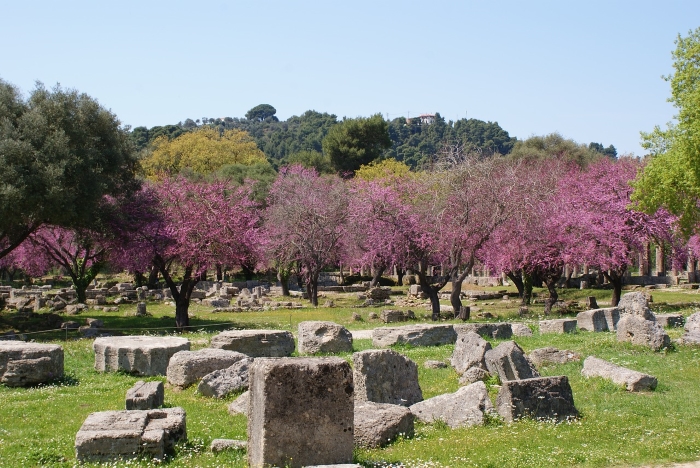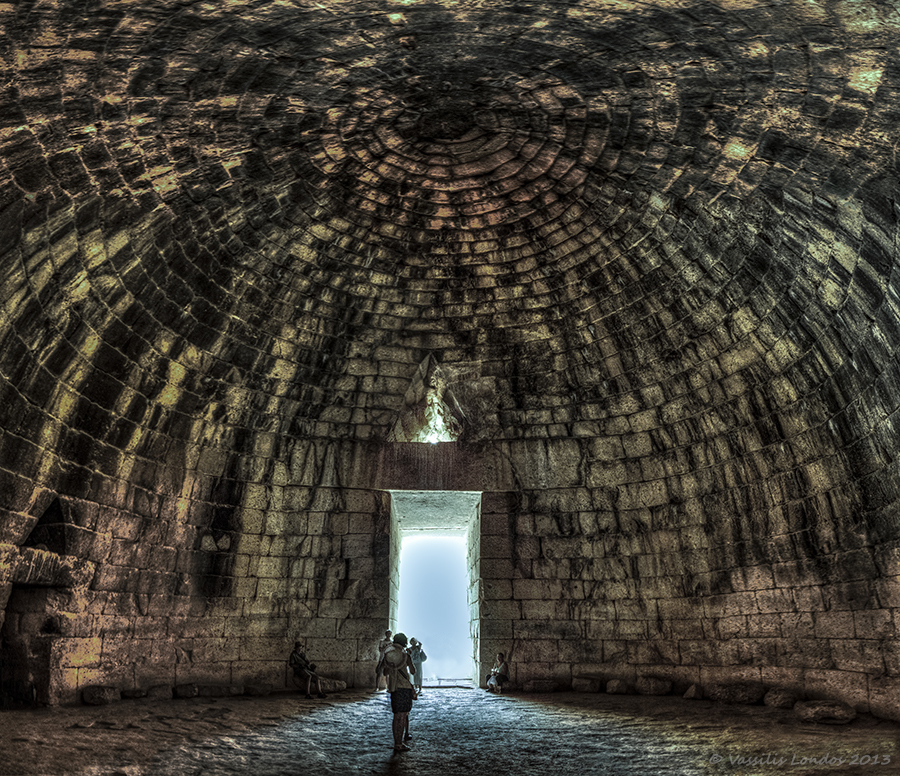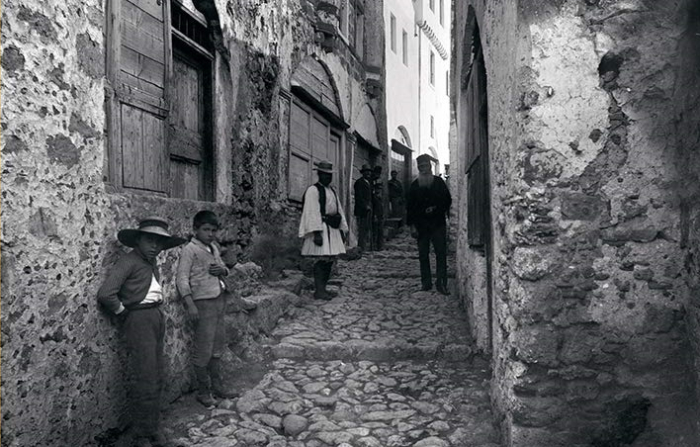- HOME
- Peloponnese
- Sparta
Sparta
Sparta (or Sparti) in the Peloponnese of Greece was one of the most important city-states of ancient Greece and has some archaeological remains at Ancient Sparta.
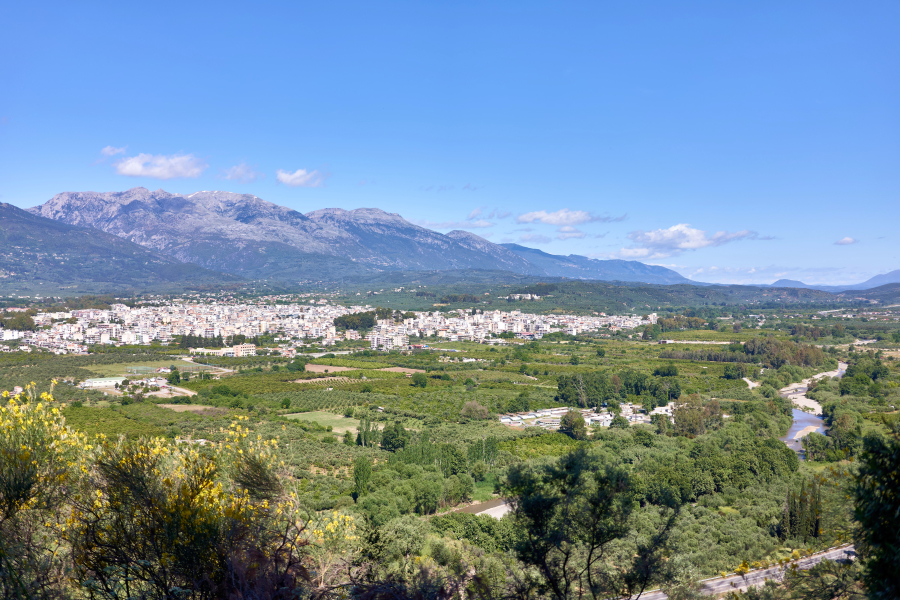 View of Sparta from Mystras
View of Sparta from MystrasPhoto used under Creative Commons CC0 1.0 Universal Public Domain Dedication.
Sparta in the Peloponnese isn’t on most people’s list of must-see places in Greece, but it has a distinguished history and an archaeological site which makes it worth visiting for a day or two. See our list of the Top Archaeological Sites in the Peloponnese.
 Sparta City Center and Town Hall
Sparta City Center and Town HallThe History of Sparta
The long and remarkable history of Sparta has filled many books, so we won’t try to emulate those here. The city is thought to have been founded in about the 9th century BC, and by 650 BC was the greatest military power in ancient Greece. It fought and defeated Athens in the Peloponnesian War of 431 to 404 BC, though began to go into decline after the Romans conquered Greece in 146 BC. Today it is the capital of the Greek region of Laconia, and has a population of under 40,000.
What to Do in Sparta
Ancient Sparta
The site of Ancient Sparta is just a few minutes’ drive north of the city centre, where housing gives way to agriculture. If you leave the city on the main road to the site you will first come across the Statue of Leonidas. Leonidas was one of Sparta’s prominent kings, and his tomb can be found at the site of Ancient Sparta.
As well as the tomb of Leonidas, at Ancient Sparta you will also find the remains of a theatre, the acropolis, ancient walls, a temple, and a 10th-century monastic church.
Archaeological Museum
 Sparta Archaeological Museum
Sparta Archaeological Museum Photo licensed under the Creative Commons Attribution-Share Alike 4.0 International license.
Sparta’s Archaeological Museum naturally has the rich finds from the site of Ancient Sparta. It’s one of the oldest archaeological museums in Greece and was the first outside Athens when it opened in 1876. It’s now a listed building and also contains Roman remains, Roman mosaics, and finds from the wider region of Laconia.
Museum of the Olive and Greek Olive Oil
On the very southwestern edge of the city is this absolutely fascinating museum which explores everything about the olive and olive oil, both central to the Greek economy. You’ll see fossilised olive leaves that are 60,000 year old, learn about the history of the olive tree from prehistoric times, the harvesting of olives, the many uses of olive oil, and see examples of olive presses throughout history as well as working miniature models of olive presses.
Getting to Sparta
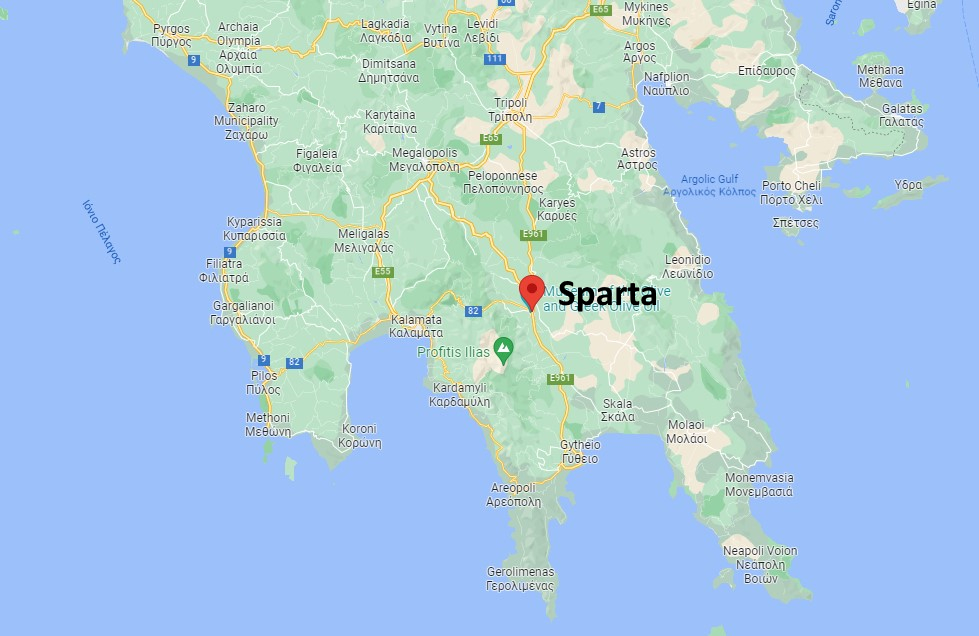 Map (c) Google Maps
Map (c) Google MapsSparta is in the centre of the southern half of the Peloponnese. It’s to the east of Mount Taygetos in the Evrotas River valley.
Sparta is about an hour’s drive east of Kalamata if you take the much longer but much quicker route via Gefyra, and about 90 minutes if you take the straight route due east through the mountains. It’s almost a two-hour drive southwest from Nafplion, and three-to-four hours from Patras.
If you’re flying, the nearest international airport is in Kalamata, with a wide range of seasonal flights from throughout Europe. The other alternative is to fly to Athens and rent a car. It’s a two-to-three-hour drive to Sparta if going direct from Athens International Airport.
Latest Posts
-
The Lesser-Known Traditions of Greek Easter
Step off the beaten path this spring and discover the enchanting — and often surprising — Easter traditions found across Greece. -
Easter in the Mystical Castle of Monemvasia
In the castle town of Monemvasia, with its dramatic medieval backdrop and sea views, Easter is a deeply spiritual and atmospheric experience. -
Sifnos: Greece’s Hidden Culinary Star on the Rise
Sifnos, a Cycladic island, is gaining fame for its rich culinary heritage, especially the beloved melopita honey-cheese tart. -
Easter in Leonidio: A Tapestry of Light, Culture and Cliffs
In Leonidio, Easter comes alive with handmade hot air balloons in the sky and lanterns made from bitter oranges in the streets. -
April 9 Strike in Greece to Impact Public Transport, Ferries and Air Travel
Transportation and travel across Greece will face disruptions on Wednesday, April 9, as public transport, ferry and aviation workers join a nationwide strike called by Greek labor unions. -
Ancient Theater of Lefkada Brought Fully to Light Following Systematic Excavation
The Greek Culture Ministry has announced that the first ancient theater ever identified in the Ionian Islands has recently been brought fully to light on Lefkada, revealing an impressive monument that… -
Seven Greek Traditions Recognized as Intangible Cultural Heritage
From traditional barrel-making to age-old folk dances, seven new entries on Greece’s National Inventory preserve the country’s living heritage for future generations. -
Greek Air Traffic Controllers to Hold 24-hour Strike, Disrupting Flights on April 9
The Hellenic Air Traffic Controllers Union have announced a 24-hour strike for Wednesday, April 9, in response to the protest called by the Civil Servants’ Confederation (ADEDY). The strike is being h… -
Ten Best Budget Hotels on Santorini
Greece Travel Secrets picks the ten best budget hotels on Santorini, some with caldera views, some near beaches and some close to the heart of Fira. -
No Ferries in Greece on April 9 as Seamen Join Nationwide Strike
The Pan-Hellenic Seamen’s Federation (PNO) has announced its participation in the 24-hour strike called by the General Confederation of Greek Labor (GSEE) on Wednesday, April 9. The strike, which will…
